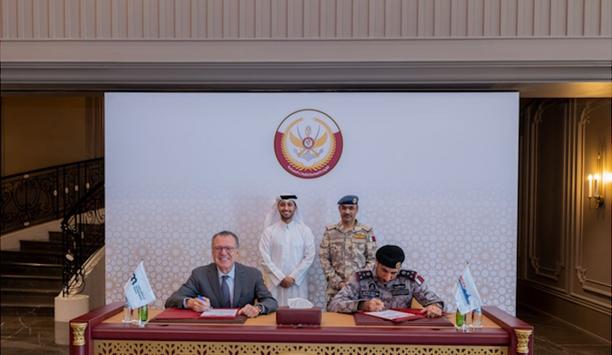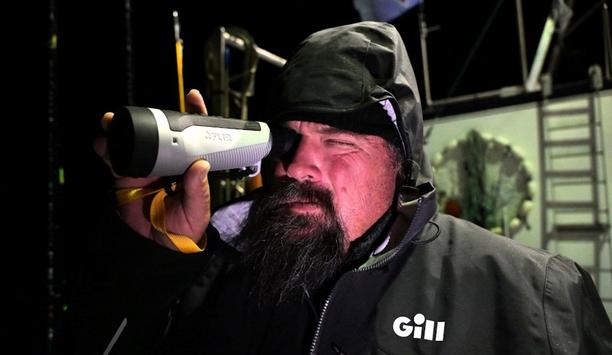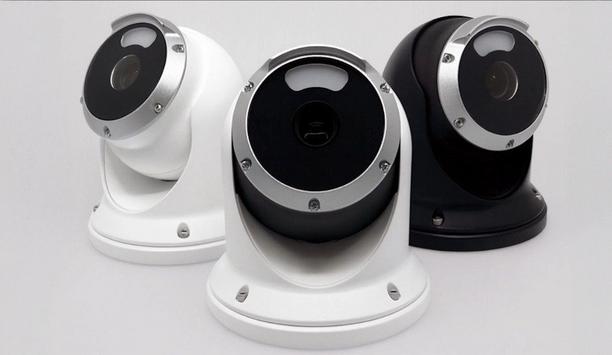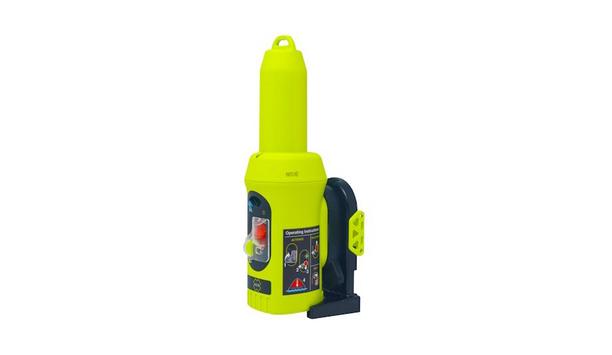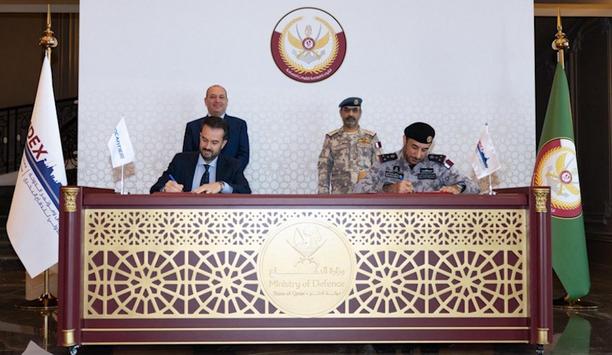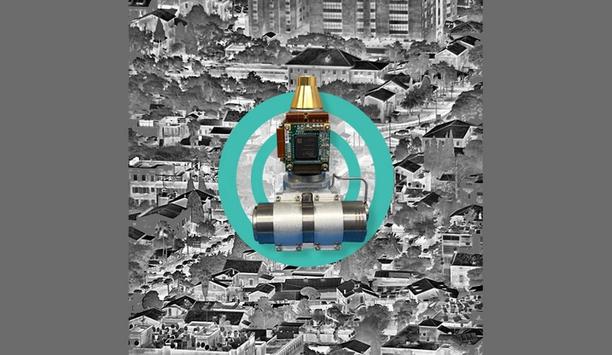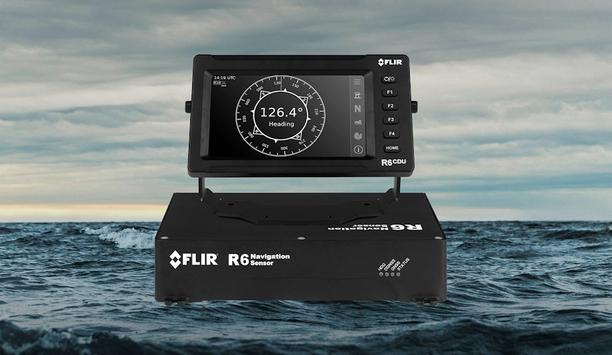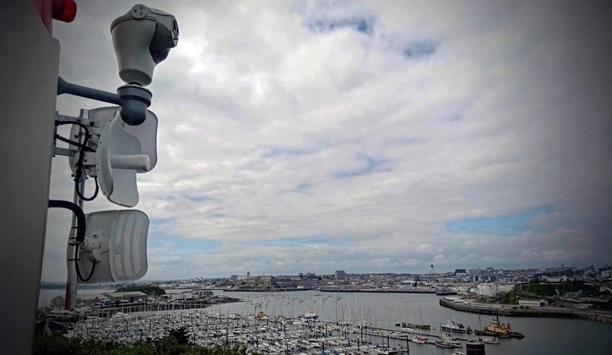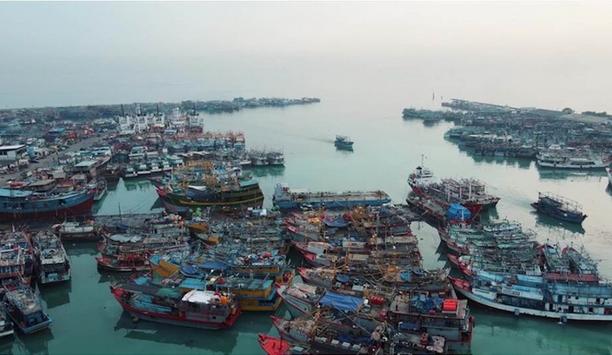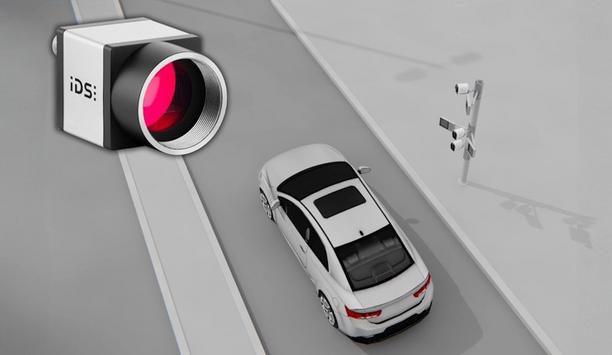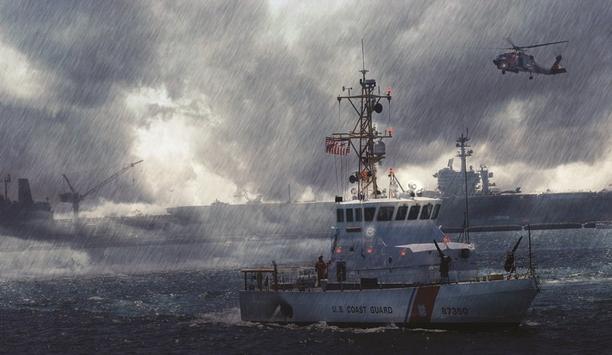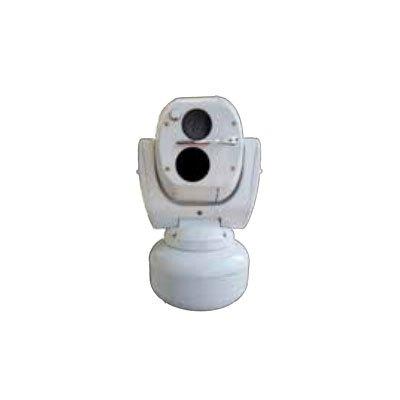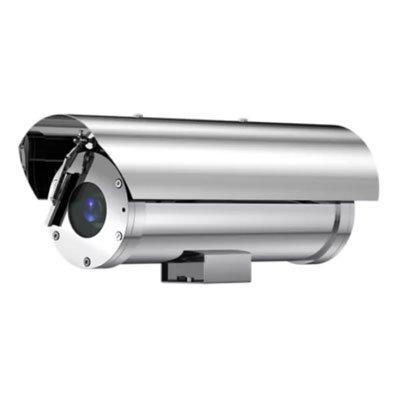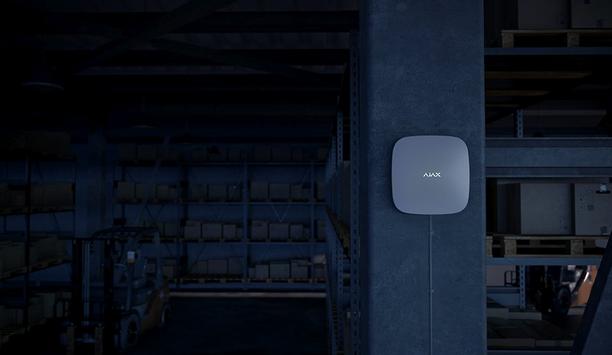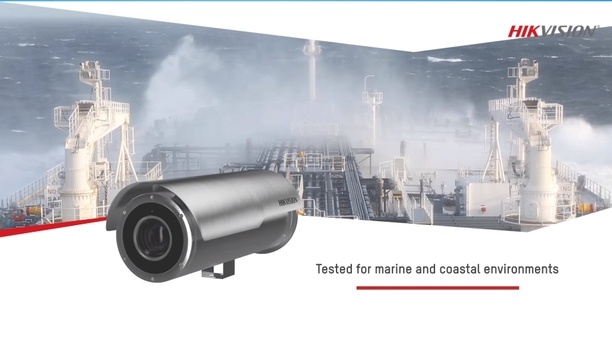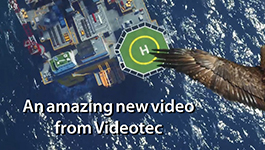Maritime surveillance
The Organizing Committee of the Doha International Maritime Defense Exhibition and Conference (DIMDEX 2026) has signed an agreement with Al Abdulghani Motors, appointing the company as the “Platinum Sponsor” of the ninth edition of the event, scheduled to take place from 19–22 January 2026 at the Qatar National Convention Center. The four-day event will be held under the esteemed patronage of His Highness Sheikh Tamim bin Hamad Al Thani, The Amir of the State of Qatar, Head of...
FLIR, pioneer in high-performance marine thermal-imaging systems, is pleased to announce that the Ocean Scout Pro handheld thermal imaging camera, has been awarded top honors in the “Personal Equipment” category at the 2025 DAME Design Awards. The DAME Design Awards, held annually at Metstrade in Amsterdam, celebrate excellence in marine equipment design, innovation, and functionality. Winning in the category highlights the Ocean Scout Pro’s contribution to enhancin...
The Organizing Committee of the Doha International Maritime Defense Exhibition and Conference (DIMDEX 2026) has announced MBDA, a world pioneer in the field of complex weapon systems, as the Gold Sponsor for the ninth edition of the exhibition, taking place from 19 to 22 January 2026 at the Qatar National Convention Center (QNCC). Held under the esteemed patronage of His Highness Sheikh Tamim bin Hamad Al Thani, the Amir of the State of Qatar, Head of State and Supreme Commander of Qatar Armed...
Iris Innovations, a world pioneer in specialized marine camera technology, has announced the launch of Photon, a compact ultra-low-light 4K night vision camera designed to make safe nighttime navigation accessible to every boater. Whether cruising after dusk, fishing before sunrise or patrolling remote coastlines, Photon delivers exceptional clarity and full-color imagery in near-total darkness – all without the need for infrared or thermal imaging. New benchmark for performance Unlike...
ACR Electronics, the pioneering provider of safety and survival equipment, is launching its latest innovation in maritime safety technology – the Pathfinder AIS SART (Search and Rescue Transmitter). Debuting at METSTRADE, the new AIS SART builds upon the success of its predecessor, the ACR Pathfinder Pro, combining proven reliability with cutting-edge AIS (Automatic Identification System) technology to advance search and rescue efforts at sea. IMO SOLAS regulations The ACR Pathfinder Pr...
The Organizing Committee of the Doha International Maritime Defense Exhibition and Conference (DIMDEX 2026) has announced Fincantieri, one of the world’s pioneering shipbuilding groups, as the Diamond Sponsor for the ninth edition of the show scheduled to take place from 19 to 22 January 2026 at the Qatar National Convention Center (QNCC). The four-day event is held under the esteemed patronage of His Highness Sheikh Tamim bin Hamad Al Thani, Head of State and Supreme Commander of Q...
News
Accelleron has signed an agreement with Hyundai Marine Solution (HMS), the aftermarket and digital division of shipbuilder HD Hyundai Group, to enter a strategic cooperation on digital solutions. Two Accelleron solutions will cover engine and turbocharger monitoring and optimization. Under the partnership, the companies will seek closer integration and further efficiencies across digital tools. These include HD Hyundai Marine Solution's ship management system, Integrated Smart Ship Solution ISS 2.0 and AI-based emissions monitoring solution OceanWise, and Accelleron’s engine performance optimization solution LOREKA360° Tekomar XPERT Engine and monitoring tool Turbo Insights. Accelleron’s advanced digital analytics solution Accelleron currently delivers LOREKA360° Tekomar XPERT Engine to around 100 vessels in HMS’s customer pool. Further licenses for HHI vessels – including those already in service and those to be built – will be issued on Accelleron’s behalf by HMS, with the number expected to reach around 500 vessels in the near future. The solution assesses engine performance and delivers related advisory instantly on board the vessel. Turbo Insights is Accelleron’s advanced digital analytics solution designed to transform raw operational data into actionable intelligence from the moment a turbocharger is installed. It enables shipowners and operators to verify performance during shop tests, sea trials, and throughout the warranty period and beyond. It can support sustainability goals and cost reduction efforts while enabling seamless integration with digital services such as LOREKA360° Tekomar XPERT Engine. AI-based vessel performance Hyundai’s ISS 2.0 is a state-of-the-art ship management system that collects real-time data from key onboard devices to provide analysis services as well as optimal navigation services. OceanWise is an AI-based vessel performance model that expands to emissions analysis and route optimization, leveraging operational voyage data without the need for onboard hardware. Delivery of Accelleron solutions Accelleron Global Head of Sales and Operations, Digital Solutions, Shailesh Shirsekar, said: “With a customer pool comprising vessels built by one of the world’s pioneering shipbuilders, HMS is a strong partner in the delivery of Accelleron solutions. Working together, we will enable ship operators to make the most of both platforms, driving efficiency and cost improvements.” Bong-jun Choi, Head of HD Hyundai Marine Solution’s Digital Technology Center, said: "Through this partnership, we will help ship owners and operators achieve a new level of operational efficiency not only for ships built at HD Hyundai but also ships in operation. We are confident that our strategic cooperation with Accelleron will create new opportunities for our customers."
SCD, a global pioeer in defense technology specializing in the development and manufacture of a wide range of cooled and uncooled infrared detectors, announces a follow-on order from a major homeland security integrator for its next-generation HD MWIR (High-Definition Mid-Wave Infrared) detectors featuring extended operational lifetime. Powered by SCD's advanced HOT (High Operating Temperature) technology coupled with robust advanced cooling technology, the new detectors deliver a breakthrough 2.5-fold increase in operational lifetime, thus enabling more than double the interval between required maintenance sessions compared to standard models. This directly addresses the critical need for long-term reliability and minimal maintenance in remote, hard-to-access security sites. Advanced HOT technology Powered by SCD’s advanced HOT (High Operating Temperature) technology and next-generation cooling design, the new BlackBird 1280 detectors deliver a 2.5-fold increase in operational lifetime compared to standard models. This breakthrough dramatically extends maintenance intervals and enhances system reliability – key advantages for remote, mission-critical, and 24/7 surveillance applications. “The demand for high-reliability, 24/7 border, naval and infrastructure security is growing rapidly,” said Shai Fishbein, VP of Business Development & Marketing at SCD. “Our customer is enabling the operation of complex security and long-range reconnaissance networks across remote and hard-to-reach sites or platforms, where maintenance is both challenging and costly.” “The new HD MWIR generation sets a new standard by combining outstanding image quality with unmatched operational longevity. This enables our customers to minimize disruption, extend system uptime, and redefine what’s possible in continuous homeland security and defense operations.” BlackBird 1280 The new long life BlackBird 1280 is designed for seamless integration into both new and legacy systems, providing high-definition IR imaging, long-range detection, and enhanced reliability across a wide spectrum of operational environments, including naval platforms. By pairing cutting-edge matured HOT MWIR sensor with robust cooling, SCD empowers system integrators to deliver next-generation situational awareness and persistent 24/7 surveillance capabilities.
The Organizing Committee of the Doha International Maritime Defense Exhibition and Conference (DIMDEX 2026) has announced that EDGE, one of the world’s pioneering advanced technology groups, will be the Main Sponsor of the ninth edition of the event, set to take place from 19 to 22 January 2026 at the Qatar National Convention Centre (QNCC). Held over four days, DIMDEX 2026 takes place under the esteemed patronage of His Highness Sheikh Tamim bin Hamad Al Thani, Amir of the State of Qatar, Head of State and Supreme Commander of Qatar Armed Forces, and is hosted and organized by the Qatar Armed Forces, under the theme: “A Global Hub for Defense Innovations: Invest in Possibilities to Shape a Secure Tomorrow.” Participating for the first time in Qatar’s flagship international defense and security exhibition, EDGE’s sponsorship underscores the growing global interest in DIMDEX, which has evolved into a premier international platform for exhibitors to showcase the latest technological breakthroughs, cutting-edge defense systems, and state-of-the-art maritime equipment. Signing ceremony The partnership further enhances opportunities for commercial exchange, industry collaboration, and international investment. The signing ceremony was held at the Ministry of Defense in the presence of HE Lt Gen (Pilot) Jassim bin Mohammed Al Mannai, Chief of Staff of Qatar Armed Forces and Rashed AlHashmi, Sr. Manager, Executive Office and Special Projects at Office of the MD and CEO of EDGE. The agreement was inked by Staff Brigadier (Sea) Abdulbaqi Saleh Al-Ansari, Chairman of the DIMDEX Organizing Committee, and Salma AlMansoori, SVP of Marketing and Communications at EDGE. Close collaboration with neighbouring nations HE Lt Gen (Pilot) Jassim bin Mohammed Al Mannai, Chief of Staff of Qatar Armed Forces stated: “Through close collaboration with neighbouring nations and regional stakeholders, we strive to anticipate emerging challenges and deploy advanced solutions, building a resilient and secure future grounded in collective progress.” “Strengthening security and stability across the region requires fostering robust partnerships, enhancing our capabilities, and leveraging shared expertise to address evolving defense and security needs effectively.” Strong global reputation Commenting on the announcement, Staff Brigadier (Sea) Abdulbaqi Saleh Al-Ansari, Chairman of the DIMDEX Organizing Committee, said: “We are delighted to welcome EDGE as the Main Sponsor of the ninth edition of DIMDEX, in addition to being an exhibitor in the event.” “With its strong global reputation as a leader in advanced defense-related technology, DIMDEX offers the ideal platform for EDGE to showcase its innovations to an international audience, opening new avenues to expand its global presence and business opportunities, while also strengthening the region’s capabilities to meet evolving defense and security challenges.” “We look forward to a successful collaboration with EDGE and to witnessing the positive impact of their participation at this edition of DIMDEX.” Advanced defense and maritime technologies Hamad Al Marar, Managing Director and CEO, EDGE, said: “EDGE joins DIMDEX 2026 as the Main Sponsor for the first time, demonstrating the scale of our ambition and our determination to lead in advanced defense and maritime technologies.” “This debut highlights the strength of our portfolio, the value we place in regional and global collaboration, and our focus on delivering solutions designed for export.” Launched in 2019 in the UAE, EDGE is one of the world’s pioneering advanced technology groups, established to develop agile, bold and disruptive solutions for defense and beyond. 4IR technologies Focusing on harnessing Fourth Industrial Revolution (4IR) technologies, EDGE is advancing sovereign capabilities for global export and national security. Working with customers and international partners, EDGE’s portfolio of highly competitive solutions includes next-generation land and naval systems, autonomous capabilities, smart weapons, propulsion systems, and advanced electronic warfare solutions. DIMDEX The Doha International Maritime Defense Exhibition and Conference (DIMDEX) has grown into a premier international event on the global maritime defense and security calendar. Beyond its role as an exhibition, it serves as a strategic platform for showcasing innovation, forging partnerships, and facilitating high-level dialog vital to strengthening defense cooperation at both national and international levels. By promoting investment, innovation and sustainable collaboration, DIMDEX continues to underline Qatar’s pivotal role in advancing global security and shaping the future of maritime defense.
Teledyne Technologies Incorporated announced the successful completion of the acquisition of the TransponderTech business from Saab AB. The newly acquired business - Teledyne FLIR TransponderTech AB will join Teledyne’s Raymarine, FLIR Marine, ChartWorld and Teledyne CARIS brands, broadening the group’s maritime technology solutions. Maritime communication solutions Based outside of Linköping Sweden, the company will market its products and solutions as FLIR TransponderTech. The brand will continue to innovate and deliver major Automatic Identification System (AIS), VHF Data Exchange System (VDES), and Global Navigation Satellite System (GNSS) technologies. Going forward, FLIR TransponderTech will be well-positioned to continue to pioneer maritime communication solutions for civil and military customers in shipping, marine traffic, airborne and space segments. FLIR TransponderTech’s communications “We are delighted to welcome the TransponderTech team to the Teledyne family,” said George Bobb, President and Chief Executive Officer. He adds, “From complete autonomous underwater vehicles to products and services for large Safety of Life at Sea (SOLAS) class vessels, maritime instrumentation and software for imaging, navigation, and safety are core markets for Teledyne. FLIR TransponderTech’s communications and navigation solutions are highly complementary and further expand FLIR Marine’s portfolio of industrial, military, and airborne technologies.”
The Organizing Committee of the Doha International Maritime Defense Exhibition and Conference (DIMDEX 2026) has signed a cooperation agreement with Barzan Holdings, under which the company will serve as the Strategic Partner and Gold Sponsor of the prestigious event for the fourth consecutive edition. Held under the patronage of His Highness Sheikh Tamim bin Hamad Al Thani, Amir of the State of Qatar, Head of State and Supreme Commander of Qatar Armed Forces, and hosted and organized by the Qatar Armed Forces, the ninth edition of DIMDEX will take place from 19 to 22 January 2026 at the Qatar National Convention Center. The event will be held under the theme: “A Global Hub for Defense Innovations: Invest in Possibilities to Shape a Secure Tomorrow.” DIMDEX and Barzan Holdings The enduring partnership between DIMDEX and Barzan Holdings underscores the commitment of national entities to supporting major events hosted by the State of Qatar. It further reflects the notable advancement of the country’s defense industries, while providing Barzan Holdings with a unique platform to present its innovations to global markets and to engage with the wealth of expertise the event attracts. The signing ceremony was held at the Qatar Ministry of Defense in the presence of HE Lt Gen (Pilot) Jassim bin Mohammed Al Mannai, Chief of Staff of Qatar Armed Forces and Mr. Mohammed Ahmad Al-Mulla, Chief Investment Officer at Barzan Holdings. The agreement was officiated by Staff Brigadier (Sea) Abdulbaqi Saleh Al-Ansari, Chairman of the DIMDEX Organizing Committee and Omar Fahad Al-Qadi, Chief Commercial Officer at Barzan Holdings. Qatar’s position across various security HE Lt Gen (Pilot) Jassim bin Mohammed Al Mannai, Chief of Staff of Qatar Armed Forces said: “The Qatari Armed Forces take great pride in organizing and hosting the Doha International Maritime Defense Exhibition and Conference, which serves as a platform that reflects our commitment to excellence in the military field. Our partnerships with national bodies and institutions play a vital role in the success of this event and in enhancing its international impact." "By combining expertise, innovation, and strategic vision, we work together to strengthen Qatar’s position across various security and defense sectors, and to build partnerships that contribute to fostering security and achieving sustainable development.” Longstanding partnership with Barzan Holdings On the occasion, Staff Brigadier (Sea) Abdulbaqi Saleh Al-Ansari, Chairman of the DIMDEX Organizing Committee, stated: “Our longstanding partnership with Barzan Holdings represents a cornerstone in delivering another exceptional edition of DIMDEX. The company’s pivotal role in advancing the defense industry and introducing cutting-edge technologies to the State of Qatar is fully aligned with our aspirations to build a future defined by sustainable security for generations to come." "DIMDEX continues to serve as a premier platform for showcasing these innovations, fostering dialog between government decision makers, industry pioneers and exhibitors, and enabling the establishment of strategic partnerships that shape the future of defense and security regionally and globally.” Innovation and contribute to regional security Eng. Mohammed Bin Bader Al Sadah, Group Chief Executive Officer of Barzan Holdings commented: “As long-time partners of DIMDEX, Barzan Holdings is proud to return as a Strategic Partner and Gold Sponsor for the 2026 edition. Over the years, our collaboration has been central to advancing Qatar’s defense and maritime security goals." "One of our main objectives in this edition is to showcase our capabilities, products and services to the international market, and DIMDEX provides us with a strategic avenue to achieve that." "DIMDEX remains a vital platform for us to connect with industry pioneers, showcase our latest technologies, and explore new partnerships that drive innovation and contribute to regional security. Together, we are shaping a safer and more secure future through collaboration, technology, and shared expertise.” Qatar’s position at the forefront of opportunities The Barzan Holdings pavilion at DIMDEX 2026 is anticipated to be a focal point of interest for visitors, where the company will present its most recent achievements and contributions to the maritime defense sector. As a national pioneer in the defense and security sector, Barzan Holdings serves as a key gateway for defense industry trade in Qatar. The company actively fosters global cooperation and influential partnerships aimed at advancing knowledge-sharing and investment in innovative defense technologies, thereby consolidating Qatar’s position at the forefront of opportunities in the current and future defense markets. Ninth edition of DIMDEX DIMDEX reaffirms the State of Qatar’s commitment to providing a world-class platform to showcase advanced defense innovations, strengthen long-term partnerships, and create new business opportunities. The event further contributes to supporting local economic growth by attracting thousands of participants and visitors in alignment with Qatar National Vision 2030. The ninth edition of DIMDEX, held over four days, will bring together an elite gathering of naval commanders, representatives from military and government entities, a wide spectrum of pioneering national and international defense companies, and key decision-makers from across the international defense industry.
FLIR, a pioneer in high-performance marine thermal-imaging systems, announced the debut of its new flagship series of multi-spectral maritime camera systems, the M460 and M560. The M460 and M560 are elite AI-powered multi-spectral camera systems tailored specifically for professional marine applications ranging from first responders, commercial vessels, and superyachts. Taking the next step from a conventional thermal camera, the M460 and M560 are complete marine-imaging systems that combine a high-performance thermal sensor with a 4K, low-light visible camera, a 12KM ITAR-free laser rangefinder and long-range laser spotlight. FLIR AI target tracking Using an onboard neural network, the cameras automatically identify and classify common marine objects The new FLIR M460 and M560 cameras feature advanced FLIR AI Target Tracking that goes far beyond traditional systems. Using an onboard neural network, the cameras keep a watchful eye on the open water and automatically identify and classify common marine objects – like vessels, buoys, and people – for easy interpretation. Once an object is selected, the camera intelligently tracks the target with dynamic pan and tilt control, maintaining precision even in rough seas, crowded waterways, or during high-speed maneuvers. Three-Axis gyro stabilization system To deliver reliable performance in any sea condition, the FLIR M460 and M560 feature the industry’s first three-axis gyro stabilization system. This advanced technology compensates for pitch, roll, and yaw—ensuring smooth, distraction-free imagery and exceptional long-range image quality. It also enhances the accuracy of AI-powered target acquisition, even in the most challenging sea states. Maritime situational awareness “With the launch of the FLIR M460 and M560, we’re setting a new standard for maritime situational awareness,” said Grégoire Outters, General Manager of FLIR Marine. “By developing our own AI neural network specifically for the maritime environment and integrating it into these cameras, we’ve transformed the M460 and M560 into essential tools for tracking targets, reducing operator workload, and enabling smarter decision-making when it matters most. With advanced three-axis gyro stabilization and multiple payload options, these cameras give mariners the confidence to navigate any situation on the water.” IR thermal sensor For thermal imaging, the M460 uses a high-sensitivity, long-wave infrared (IR) thermal sensor to deliver best-in-class image quality along with improved contrast, spatial filtering and image sharpening. M460's thermal sensor is equipped with a 5x optical zoom lens for early detection of distant targets. The M560 uses a high-sensitivity, mid-wave IR thermal sensor and 14x optical zoom lens to further enhance detection capabilities, image quality and deliver a long-range performance. Both cameras offer Color Thermal Vision (CTV), combining the color visual elements from the visible camera to enhance and provide context to the thermal scene. With CTV, navigation marks appear in their natural red and green, while vessels and shoreline features are easier to identify with color overlays. Additional features The M460 and M560 feature a pre-installed integrated tight-beam laser spotlight with the ability to illuminate objects up to 1km away and enhance the 4K camera performance. Each model is also available to come pre-installed with or without an ITAR-free laser rangefinder designed to accurately measure target distance at long range and in less-than-ideal visibility conditions. Models with the rangefinder will offer an effective range up to 6.5 nautical miles (12km). The M460 and M560 will be on display at the FLIR stand, 08.729 during METSTRADE, November 18 to 20, 2025 at the RAI Amsterdam.


Expert commentary
The global maritime surveillance market is projected to grow from $21.9 billion in 2023 to $ 42.7 billion by 2033. This growth is being driven by increasing global trade, maritime security concerns, and the adoption of advanced surveillance technologies such as radars, drones, and satellite monitoring systems. Moreover, the global shipping industry is now on the frontlines of a new kind of conflict — one defined by economic coercion, shadow fleets, and contested logistics – a durable competition where adversaries seek control and influence over global supply chains. As tariff regimes expand and national security policies increasingly target commercial vessels, maritime operators are being forced to navigate a risk environment shaped more by geopolitics than wind and weather. Infrastructure of global trade Trade disruptions are no longer accidental by products of diplomacy — they are deliberate policy levers. Tariff escalation between the U.S. and China, sanctions on Russian oil, and Houthi attacks in the Red Sea are not isolated threats; they signal a new normal in which governments treat the shipping industry as a tactical asset. From China's military-civil fusion shipbuilding policies to LOGINK, its state-run maritime surveillance network, the very infrastructure of global trade is becoming entangled in nation-state agendas. Contested logistics: Struggle for global economic stability The current maritime threat landscape involving contested logistics contains strategic positioning The current maritime threat landscape involving contested logistics encompasses strategic positioning across critical chokepoints and infrastructure. The statistics are sobering: major shipping companies reported traffic through the Suez Canal dropped by 66% as of September 2024 due to Houthi attacks, with J.P. Morgan estimating shipping costs have surged significantly, particularly from Asia to Europe, nearly five-fold. Regional maritime security issues These developments illustrate how foundational industries, such as shipbuilding, semiconductors, and rare earth minerals, have become battlegrounds in a broader geopolitical struggle where a cascade of effects have the potential to destroy economies. For example, a military blockade of Taiwan — where Taiwan Semiconductor Manufacturing Corporation operates — would impact every company dependent on advanced semiconductors. This interconnectedness means that what may, on the surface, appear to be regional maritime security issues, can be much more — the potential for global economic disruption across multiple industries. Monitoring of Arctic fleet movements Shadow fleets operated by sanctioned states rely on tactics such as false flagging, frequent ownership changes New threat vectors are coming into focus as the seas expand. As the polar ice caps melt, new Arctic shipping lanes are opening, with a large portion of traffic driven by Russian vessels. These routes present unique surveillance challenges due to their remote nature and the limited presence of traditional maritime enforcement bodies. Monitoring of Arctic fleet movements and infrastructure developments is essential for maintaining security in this emerging corridor. Concerns about dual-use capabilities and strategic readiness Shadow fleets, illicit networks, and military-grade commercial vessels represent real risks, posing challenges in the areas of regulatory compliance, insurance viability, and operational safety. Shadow fleets operated by sanctioned states rely on tactics such as false flagging, frequent ownership changes, and manipulations of the Automatic Identification System (AIS). By turning off transponders, spoofing locations, or falsifying data, these vessels can effectively vanish from traditional tracking systems. This disappearance makes ships harder for authorities to trace and easier for adversaries to exploit for sanctions evasions and/or covert logistics. China's commercial fleets increasingly mirror military standards, raising concerns about dual-use capabilities and strategic readiness under the guise of trade. The need for a new risk framework To navigate this new threat landscape on the high seas, organizations must adopt a new kind of visibility For logistics and shipping pioneers, these implications are profound. This is no longer about simply avoiding sanctioned cargo — it's about forecasting how governments will act and how quickly those actions can alter operations. Vessels may be commandeered, sanctioned, or rerouted without warning. Insurance may evaporate. Contracts may become liabilities. To navigate this new threat landscape on the high seas, organizations must adopt a new kind of visibility — one that models the cascading effects of tariffs, military requisition policies, and enforcement shifts. This is where Open-Source Intelligence (OSINT) becomes indispensable. Real-time context on geopolitical risks OSINT draws from publicly available data -- including satellite imagery, port registries, and social media — to provide real-time context on geopolitical risks. It can be used to track vessel flagging and ownership changes, monitor transshipment hubs, and surface anomalies in crew rosters and employment histories — indicators often tied to sanctions evasion or illicit activity. AIS anomaly detection reveals when ships "go dark." Satellite imagery exposes vessels operating without transponders. Tracking shifts in vessels' flagging or changes in crew manifests can signal risk before it hits operations. Early indicators of disruption OSINT supports risk modeling by revealing trends like flag-of-convenience usage, secondary insurance For insurers and regulators, OSINT supports risk modeling by revealing trends such as flag-of-convenience usage, secondary insurance underwriting in high-risk zones, and affiliations with known bad actors. OSINT doesn't just enhance compliance — it enables foresight, empowering industry players to anticipate when and where governments will act. Now, tariff announcements, sanction designations, and strategic military exercises are not isolated datapoints — they're potentially early indicators of disruption. Maritime situational awareness is a business imperative The age of separating business risk from political risk is over. Global shipping is now a domain of contested logistics where the rules can change as fast as a sanctions update or new enforcement directive. Companies that integrate OSINT into their operational planning gain the ability to model and mitigate threats proactively. Those that don't may find themselves caught in the wake of potential financial, operational, and reputational harm. The shipping industry needs access to the same kind of threat modeling governments use to act. In an era of growing complexity, the role of OSINT in securing global shipping networks cannot be overstated.
Global transportation networks are becoming increasingly interconnected, with digital systems playing a crucial role in ensuring the smooth operation of ports and supply chains. However, this reliance on technology can also create vulnerabilities, as demonstrated by the recent ransomware attack on Nagoya Port. As Japan's busiest shipping hub, the port's operations were brought to a standstill for two days, highlighting the potential for significant disruption to national economies and supply chains. Transportation sector The attack began with the port's legacy computer system, which handles shipping containers, being knocked offline. This forced the port to halt the handling of shipping containers that arrived at the terminal, effectively disrupting the flow of goods. The incident was a stark reminder of the risks associated with the convergence of information technology (IT) and operational technology (OT) in ports and other critical infrastructures. This is not an isolated incident, but part of a broader trend of escalating cyber threats targeting critical infrastructure. The transportation sector must respond by bolstering its defenses, enhancing its cyber resilience, and proactively countering these threats. The safety and efficiency of our transportation infrastructure, and by extension our global economy, depend on it. Rising threat to port security and supply chains XIoT, from sensors on shipping containers to automatic cranes, are vital to trendy port functions OT, once isolated from networked systems, is now increasingly interconnected. This integration has expanded the attack surface for threat actors. A single breach in a port's OT systems can cause significant disruption, halting the movement of containers and impacting the flow of goods. This is not a hypothetical scenario, but a reality that has been demonstrated in recent cyberattacks on major ports. Adding another layer of complexity is the extended Internet of Things (XIoT), an umbrella term for all cyber-physical systems. XIoT devices, from sensors on shipping containers to automated cranes, are now integral to modern port operations. These devices are delivering safer, more efficient automated vehicles, facilitating geo-fencing for improved logistics, and providing vehicle health data for predictive maintenance. XIoT ecosystem However, the XIoT ecosystem also presents new cybersecurity risks. Each connected device is a potential entry point for cybercriminals, and the interconnected nature of these devices means that an attack on one, which can move laterally and can have a ripple effect throughout the system. The threat landscape is evolving, with cybercriminals becoming more sophisticated and their attacks more damaging with a business continuity focus. The growing interconnectivity between OT and XIoT in port operations and supply chains is also presenting these threat actors with a greater attack surface. Many older OT systems were never designed to be connected in this way and are unlikely to be equipped to deal with modern cyber threats. Furthermore, the increasing digitization of ports and supply chains has led to a surge in the volume of data being generated and processed. This data, if not properly secured, can be a goldmine for cybercriminals. The potential for data breaches adds another dimension to the cybersecurity challenges facing the transportation sector. Role of Cyber Resilience in Protecting Service Availability Cyber resilience refers to organization's ability to prepare for, respond to, and recover from threats As the threats to port security and supply chains become increasingly complex, the concept of cyber resilience takes on a new level of importance. Cyber resilience refers to an organization's ability to prepare for, respond to, and recover from cyber threats. It goes beyond traditional cybersecurity measures, focusing not just on preventing attacks, but also on minimizing the impact of attacks that do occur and ensuring a quick recovery. In the context of port operations and supply chains, cyber resilience is crucial. The interconnected nature of these systems means that a cyberattack can have far-reaching effects, disrupting operations not just at the targeted port, but also at other ports and throughout the supply chain. A resilient system is one that can withstand such an attack and quickly restore normal operations. Port operations and supply chains The growing reliance on OT and the XIoT in port operations and supply chains presents unique challenges for cyber resilience. OT systems control physical processes and are often critical to safety and service availability. A breach in an OT system can have immediate and potentially catastrophic physical consequences. Similarly, XIoT devices are often embedded in critical infrastructure and can be difficult to patch or update, making them vulnerable to attacks. Building cyber resilience in these systems requires a multi-faceted approach. It involves implementing robust security measures, such as strong access controls and network segmentation, to prevent attacks. It also involves continuous monitoring and detection to identify and respond to threats as they occur. But perhaps most importantly, it involves planning and preparation for the inevitable breaches that will occur, ensuring that when they do, the impact is minimized, and normal operations can be quickly restored. Building resilience across port security and supply chains In the face of cyber threats, the transport sector must adopt a complete method of cybersecurity In the face of escalating cyber threats, the transportation sector must adopt a comprehensive approach to cybersecurity. This involves not just implementing robust security measures, but also fostering a culture of cybersecurity awareness and compliance throughout the organization. A key component of a comprehensive cybersecurity strategy is strong access controls. This involves ensuring that only authorized individuals have access to sensitive data and systems. It also involves implementing multi-factor authentication and regularly reviewing and updating access permissions. Strong access controls can prevent unauthorized access to systems and data, reducing the risk of both internal and external threats. Network segmentation Network segmentation is another crucial measure. By dividing a network into separate segments, organizations can limit the spread of a cyberattack within their network. This can prevent an attack on one part of the network from affecting the entire system. Network segmentation also makes it easier to monitor and control the flow of data within the network, further enhancing security. Regular vulnerability assessments and patch management are also essential. Vulnerability assessments involve identifying and evaluating potential security weaknesses in the system, while patch management involves regularly updating and patching software to fix these vulnerabilities. These measures can help organizations stay ahead of cybercriminals and reduce the risk of exploitation. EU’s NIS2 Directive EU’s NIS2 Directive came into effect, and member states have until October 2024 to put it into law The transportation sector must also be prepared for greater legislative responsibility in the near future. The EU’s NIS2 Directive recently came into effect, and member states have until October 2024 to put it into law. The Directive aims to increase the overall level of cyber preparedness by mandating capabilities such as Computer Security Incident Response Teams (CSIRTs). Transport is among the sectors labeled as essential by the bill, meaning it will face a high level of scrutiny. Getting to grips with the complexities of XIoT and OT integration will be essential for organizations to achieve compliance and avoid fines. Global transportation infrastructure Finally, organizations must prepare for the inevitable breaches that will occur. This involves developing an incident response plan that outlines the steps to be taken in the event of a breach. It also involves regularly testing and updating this plan to ensure its effectiveness. A well-prepared organization can respond quickly and effectively to a breach, minimizing its impact and ensuring a quick recovery. In conclusion, mastering transportation cybersecurity requires a comprehensive, proactive approach. It involves implementing robust technical measures, fostering a culture of cybersecurity awareness, and preparing for the inevitable breaches that will occur. By taking these steps, organizations can enhance their cyber resilience, protect their critical operations, and ensure the security of our global transportation infrastructure.
Open platform video technology software is more than just a product; it's a tool that helps customers achieve their desired business outcomes. Safety, round-the-clock security, and increased operational efficiencies are now the norm due to video technology. Responsible Technology Despite humanity’s impressive technological advances, we also recognize the immense responsibility that comes with technological innovation. It's not enough to focus solely on the positive impact video technology can make, we must also be vigilant in identifying and addressing any potential negative consequences it can have on society and its citizens. This is the role of Responsible Technology. Data privacy We want to use all the good things that technology innovation brings, whether it be video, AI, ML, facial recognition, etc. We want to use all the good things that technology innovation brings, whether it be video, Artificial Intelligence, machine learning, facial recognition, etc. to serve people in societies in a responsible way. That means making sure that we regulate technology in a way that respects human rights and data privacy. Addressing the challenges The challenge is, that rather often technology leaders and policymakers either have conflicting interests or collaborate too late. To be responsible, business leaders must support their societies and policymakers in making regulations in the interest of the common good. At Milestone Systems, we are actively looking at how we develop our software responsibly, how our partners responsibly sell our software, and very importantly, how our customers use our software with a responsible mindset. Ensuring good corporate governance As a long-time partner within the security industry, we’re celebrating our 25th Anniversary this year, we are supporting the regulation of video technology for the good of society. However, it of course needs to strike the fine line between the right legislation and not hindering innovation. UNGP The UNGP is the most authoritative and widely adopted set of principles for responsible business At Milestone Systems, we want to play an active role in this and that is why we have pledged our support to the UN's Guiding Principles on Business and Human Rights (UNGP). The UNGP is the most authoritative and widely adopted set of principles for responsible business. The principles call on governments and companies to identify, prevent, mitigate, and remedy actual and potential human rights abuses. Since its launch in 2011, the UNGPs have received wide support from states, civil society organizations, and the private sector, making them the key global foundation for business and human rights. Protect, respect, and remedy Through this commitment, we are taking steps to ensure good corporate governance and ethical standards in the development of our technology. We're generating mechanisms to prevent misuse and we are building educational practices internally. Based on the UNGP’s three pillars: protect, respect, and remedy, we are developing a set of Responsible Technology Principles and procedures for the development, selling, and use of our products. Need for video technology regulation In addition, we are currently evaluating all the various technology areas in which our video software can be used, such as with third-party integrations that utilize e.g., facial recognition. We are mapping out the advantages and disadvantages for societies. One key area of concern is how local authorities are mapping and storing data about us as individuals. This is the reason why we're inviting more legislation to regulate video technology rather than less. Engaging With policymakers We are meeting ministers and trade organizations as we believe this needs to be a joint effort where all parties are heard We are proactively reaching out to and connecting with policymakers and other relevant stakeholders to discuss our approach to and take on Responsible Technology and encouraging the political landscape to work with us around regulation and legislation. We are meeting ministers and trade organizations as we believe this needs to be a joint effort where all parties are heard and where we can openly weigh the advantages and the challenges of technology, whether it is video, facial recognition, machine learning, Artificial Intelligence, or other technologies. Striking a balance Implementing Responsible Technology is a journey, not a destination. To give it the focus needed, we have created a dedicated team to implement this initiative at Milestone Systems. At the same time, we are reaching out to the political landscape to discuss how we balance regulation without hindering innovation. Video technology used ethically We are a global company with worldwide operations, and we are having dialogues about how video technology is being used and how we can have meaningful talks about what regulation and legislation should look like. However, we don’t necessarily want to limit access to the technology itself. Facial recognition We encourage the policymakers to engage with us in the industry so that together we can strike the fine line Facial recognition is a great example of this. The EU is considering making live facial recognition illegal. That would be a huge inhibitor of proactive terrorism prevention. For example, if a well-known terrorist is walking down the street and is being mapped out against Interpol’s most wanted list, the authorities should be able to react. However, if a person walking down the street but is not mapped out or does not have any priors then the city should not be allowed to store the data of that individual’s whereabouts at that point in time. This potential legislation is concerning to me as a citizen of Europe. Instead, we encourage the policymakers to engage with us in the industry so that together we can strike the fine line for the better good of all of us. Maintaining high ethical standards We have a firm understanding and expectation that ethical standards are a huge driver in the security business. Citizens are not in favor of technology companies abusing data about them and monetizing from things that they have not opted in to do. Soon, I think we will see many more companies and governments leaning toward suppliers that do have a responsible mindset and high ethical standards for partnerships. Ethical practices Our journey toward Responsible Technology is an ongoing process, and we must remain steadfast in our commitment to ethical practices and the protection of human rights. We recognize that the rapidly changing technological landscape continually presents new challenges and opportunities. For this reason, we continuously look into how we can improve, for example, our end-user license agreements to avoid potential human rights abuses. An industry responsibility Security companies must prioritize careful planning and preparation, including developing policies and procedures For Responsible Technology to truly become a reality, compliance with international human rights laws and data privacy regulations is critical. Security companies must prioritize careful planning and preparation, including developing policies and procedures that govern the ethical use of video surveillance systems. The secure and ethical community In today's technology environment where deep integrations, machine learning, and artificial intelligence are becoming the norm, Responsible Technology is more relevant than ever. The security industry has a unique opportunity to set an example for other sectors by promoting a secure and ethical development community that prioritizes Responsible Technology, trustworthy data collection, and the protection of human rights. We must all rise to this challenge and embrace our role as ethical leaders for the greater good of both people and societies.
Case studies
Cattewater Harbor in Plymouth is harnessing the power and performance of 360 Vision Technology’s Invictus cameras, to protect and secure operations across the challenging and changing conditions at the harbor’s extensive shoreline. The UK manufacturer of ruggedized HD, radar and thermal PTZ imaging cameras, was selected to provide their industry-pioneering camera technology after a comprehensive on-site evaluation. Civilian pleasure traffic Plymouth is the largest city on the southwest Peninsula and the port is also home to the largest naval base Located on the south coast of Devon, Plymouth is the largest city on the southwest Peninsula and the port is also home to the largest naval base in Western Europe. As well as civilian pleasure traffic from paddleboards to yachts, the Port of Plymouth handles a variety of cargo vessels through its commercial terminals at Cattedown Wharves, Victoria Wharf and Corporation Wharf. Freight includes liquid and dry bulk, as well as specialist project consignments for construction and heavy industry. Safe operation The Cattewater Harbor Commissioners are responsible for the smooth and safe running of the port. They are required to maintain and order safe navigation for all manner of craft, maintain and survey dredging channels, maintain navigation marks and lights, provide pilotage services, and traffic regulation within the Cattewater Harbor and the remainder of the civil port. At the port, nationally agreed standards for the safety of marine operations are required to be applied with a commitment to both local and international security measures, with the port’s own pilots boarding and guiding vessels with a 24/7 essential safety service - ensuring that all vessels over 50m complete their passage safely. Ensure the safety of navigation The harbor covers a wide coastline, with limits to the east of a line joining Mountbatten Breakwater The harbor covers an expansive coastline, with limits to the east of a line joining Mountbatten Breakwater to Fishers Nose, bounded by Sutton Lock Gates to the North, and Laira Bridge to the East. The Harbor Master’s role is to ensure the safety of navigation for all harbor users - whether military warships, cross-channel ferries, UAVs, underwater research vessels, small fishing boats, fuel tankers, large cargo ships, jet skis, or paddle boarders - and to take preventative measures to avoid incidents. “We are responsible for the safety of vessels, people and operations,” says Capt. Richard Allan, CEO & Harbor Master, PFSO (Port Facility Security Officer), Cattewater Harbor Commissioners. “We need to know what’s happening in the port at all times”. Effective surveillance coverage To achieve this, a camera system covering the port was deemed invaluable, with requirements for total coverage of the water and shoreline, combined with economy, performance and longevity of the camera equipment in the harsh seaport environment. The camera system covering the port was deemed invaluable, with a need for total coverage of the water To bring the project to fruition, Outersight (UK), a 'hands-on' consultancy dedicated to delivering innovative technical solutions were brought on board. Working with the Cattewater Harbor Commissioners and 360 Vision on previous projects for over ten years, and with experience working with universities, government departments, broadcasters, nature conservation bodies, natural heritage visitor centers, as well as port authorities-Cattewater Harbor Commissioners knew that Outersight (UK) were the people with the experience required for the project. Surveillance camera experience and technological expertise “We have worked with 360 Vision on many projects and have relied on the manufacturer’s surveillance camera experience and technological expertise before,” says Peter Barlow, Managing Director of Outersight (UK). “It was no different with this project. Right from the start, the team at 360 Vision helped us to demonstrate the advantages of using a network of their Invictus cameras at the port - primarily with an on-site demonstration to the port management team - so they could get real ‘eyes-on’ experience of the Invictus camera within the environment in which it would be used.” 360 Vision Invictus cameras Outersight team installed a network of 360 Vision Invictus cameras around the port to cover the water The Outersight (UK) team installed a network of 360 Vision Invictus cameras around the port to cover the water and shoreline, including cameras high on the marker light poles that signal the entrance to the port. “The camera locations were selected based on the most economical way to cover the area required,” continues Peter. “The flexibility of mounting options and visual performance of the Invictus cameras really paid dividends, allowing us to provide the port with the coverage they required, allied to the most economical cost." Brilliant zoom function of the Invictus cameras Peter added: “The fact that we have access to the navigation light towers which by default have a great view of the water, allied with the brilliant zoom function of the Invictus cameras means we do not need many cameras to cover a really large area." "By specifying really great cameras and optimizing each camera position, we have managed to cover an extensive area with only a small amount of equipment - giving us great return on investment and the lowest possible running costs.” Access to the cameras to oversee operations The 360 Vision cameras cover the entire harbor area, including Cattewater Berths, Barbican Landing Stage, marina areas, slipways, and the vast shoreline. They are located on navigation lights dotted around the estuary and on top of the harbor master’s building, with all having good open aspects to the water for maximum surveillance coverage. 360 Vision Invictus cameras feature 32x zoom and a 5-year guaranteed marine-grade paint Additionally, The Cattewater Harbor Master provides the Kings Harbor Master with access to the cameras to oversee operations in the MoD dockyard and Plymouth Sound. 360 Vision Invictus cameras feature 32x zoom and a 5-year guaranteed marine-grade paint – an essential attribute for use within the harbor’s corrosive saline environment. Additionally, several Invictus cameras with PoE option were used – greatly simplifying installation at the more remote reaches of the system. Image quality of the Invictus camera “The 32x zoom capability and stable image quality of the Invictus camera provides wide area coverage and excellent zoomed-in image results,” explains Peter. “This is especially advantageous to identify small vessels at distance – an essential requirement at the port.” “The Invictus camera has everything we need and at a very competitive price,” adds Richard. “It’s especially reliable in the harsh coastal environment, where we deal with a combination of sea salt, saline air and hot summer sun.” Network of Invictus cameras Surveillance system is recorded 24/7 and video footage can be accessed by the Harbor Master in the control room With essential marine environment features, such as viewing window wiper and low light capability, the network of Invictus cameras is capable of alerting the harbor management team to any operational, security or safety situation, allowing them to take action and suppress the situation before it escalates. The surveillance system is recorded 24/7 and video footage can be accessed by the Harbor Master in the control room and by mobile login by authorized duty personnel on site, via seamless integration with the Blue Iris VMS. Optical clarity and zoom capability Optical clarity and zoom capability of the camera network ensures instant visual confirmation, no matter what size of vessel or incident, with members of the harbor management team afforded remote access to the camera network via their phones for instant confirmation of incidents while on the ground or out on the water. The low power operation of the Invictus cameras also means lower running costs for the port, as certified by the camera’s Elexon charge code compliance for Unmetered Supply (UMS) outdoor powered devices, where electricity consumption is billed at just 30W per camera deployed 360 Vision’s Invictus cameras Organizations operating CCTV systems can achieve power consumption savings of an incredible 70% Organizations operating CCTV systems can achieve power consumption savings of an incredible 70%. This is a significantly lower power draw versus peer PTZ cameras with generic Charge Codes which are typically billed at 100W, and helps to lower daily running costs at the port. Using 360 Vision’s Invictus cameras as its backbone, Cattewater Harbor Commissioners now have an electronic surveillance system that is reliable, future-proof, rugged, economical and delivers the high performance required to meet the demanding daily operations of the busy seaport. Inception of the new CCTV system “Making things safe and secure for everyone using the port is greatly aided by the surveillance camera system,” says Richard. “The port keeps watch on a wide variety of vessels, including those carrying oil, gas, cattle feed and aggregate, to military warships, cross-channel ferries and underwater research vessels." "We also see paddle boarders and jet ski enthusiasts out on the waters too. Evidential footage from the system provides us with the power to convict irresponsible users, such as jet ski riders speeding, or illegal bass fishing brought in on small boats at night." “Since the inception of the new CCTV system, we have been able to solve a vast variety of incidents from the control room - keeping the public safe, ensuring shipping adheres to the rules of the port and preventing crime.”
Nizam Zachman Port, one of Indonesia's most important fishing hubs, supports thousands of local fishermen and maritime businesses. Recognizing the potential to enhance operations and better serve the community, the port management deployed Hikvision’s AIoT (AI-powered Internet of Things) technologies to make the port smarter and more efficient. Standard AIS signaling Port management identified several key areas where they believed technology could make a significant difference Every day, Nizam Zachman Port handles huge volumes of fish destined for both the Indonesian domestic market and for export around the world. Such an operation relies heavily on technologies that can make the port safer, more efficient, and more secure. Recently, the port management identified several key areas where they believed technology could make a significant difference. The first was to develop comprehensive capabilities to identify ships entering their waters, including unregistered fishing boats that don't use standard Automatic Identification System (AIS) signaling. They wished to adopt a unified detection approach that would operate effectively in all weather conditions, from foggy mornings to dark nights. Traditional communication methods The management team also recognized the value of upgrading their ship-counting and reporting systems. While their experienced staff performed excellent manual counting, management knew that combining human expertise with automated technology could deliver even more accurate records. This would be particularly valuable during busy periods, and when ships arrive at night and depart before dawn. Another area for improvement was communication. Here, the management team wanted to replace traditional communication methods with a modern audio system for efficient message delivery across the harbor. Innovative technologies for a smarter port To put their plans into action, Nizam Zachman Port partnered with PT. Dea Global Niaga, who designed a comprehensive system that perfectly matched the port's ambitious goals. Ship detection and identification: At the heart of the new system is an Anti-corrosion Thermal & Optical Bi-spectrum Network Positioning System (DS-2TD6267-100C4L/WY). This specialized camera uses thermal imaging to detect heat signatures from ship engines and hulls up to 2 km away and works equally well in fog, rain, or darkness. The casing meets the NEMA-4X anti-corrosion standard, ensuring durability in the salty sea environment. The camera is complemented by a Security Radar (DS-TDSB0W-FK/2km). At any point in time, this can identify and track the movement of up to 32 vessels in the harbor, providing detailed speed and distance information. When the radar detects movement, it automatically directs the camera system for seamless coordination. Enhancing perimeter security: To enhance perimeter security, two DarkFighter IR Network Speed Domes (DS-2DE5425IW-AE(T5)) have been installed. These cameras, with their Pan-Tilt-Zoom (PTZ) functionality, offer flexible movement and orientation. They come equipped with a 25x optical zoom, enabling them to provide detailed views of the port’s perimeter, ensuring that any incidents are quickly identified, even in low-light conditions. Improving communications across the port: For communication, seven Network Speakers (DS-QAZ1310G1T-E) have been installed across the port. These speakers allow the command center to broadcast announcements and alerts much more efficiently than before. Centralized intelligence: Everything connects through Hikvision’s 64-Channel 8K Network Video Recorder (DS-9664NI-M16/R), to the HikCentral Professional Platform. This video management platform serves as the system’s brain, automatically counting ships, analyzing patterns, and generating comprehensive reports that provide valuable insights into port traffic. Enhanced efficiency, accuracy, and community safety According to Mr. Al Fajar Alam, a Port Master at Nizam Zachman Port, the results have been remarkable. “The capability to maintain high performance in all-weather ensures that no ship goes undetected,” he said. The automated ship counting system delivers accurate information that improves everything from fee collection to capacity planning. As a result, port operations became significantly more efficient, with automated systems handling routine monitoring while staff focus on higher-value activities. Benefit from enhanced security and smoother processes For the broader fishing community, these advances mean a safer, more organized port experience “Communication has also been improved dramatically,” Mr. Alam added, “Port staff can now deliver clear messages instantly throughout the harbor. Emergency announcements, docking instructions, and routine communications now flow smoothly through the IP speaker system.” For the broader fishing community, these improvements mean a safer, more organized port experience. Fishing operations benefit from enhanced security and smoother processes, while the entire local maritime economy gains from having a truly modern facility. Maritime tradition meets AIoT The transformation showcases what's possible when maritime tradition meets AIoT. Nizam Zachman Port hasn't just upgraded technology–they've reimagined how a fishing port operates in the modern era. As other ports across Indonesia seek modernization, this project stands as an inspiring example of how AIoT can enhance community-focused maritime facilities while preparing them for future growth.
The precise recording of passenger numbers is essential for transport companies - it helps to optimize timetables, make better use of capacities and organize local public transport more efficiently. A modern solution for this is camera-based passenger counting. Intelligent image processing systems automatically and precisely record how many people board and alight - without any manual counting. With Adigo nPax, the Norwegian company Adigo Mechatronics has developed such a system especially for ferries. The required images are supplied by an industrial camera from IDS Imaging Development Systems GmbH. But how exactly does this technology work, what advantages does it offer and where is it already being used? digital toll technologies International shipping laws require ferry operators to know the exact number of passengers on board International shipping regulations require ferry operators to know the exact number of passengers on board - a task that has traditionally been handled in conjunction with the ticketing process. However, in the course of automation, ferry boarding has increasingly shifted to free-flow models. Vehicles and passengers can drive or walk directly onto the ferry without traditional ticket controls or barriers. Automated systems such as cameras, sensors, or digital toll technologies record the vehicle's license plate number or the amount of passengers in real time. The aim: a fast and smooth boarding process without long waiting times or manual checks. Adigo nPax system However, counting passengers in moving vehicles is still a challenge that often requires staff - especially when there are large numbers of passengers or when small children are sitting in vehicles with tinted windows. This is where the Adigo nPax system comes in: Using a combination of a camera and AI-supported algorithms, it automatically records the number of passengers and transmits it directly to the ship's logging system. The data is documented centrally and thus made available for authorities or internal processes. If necessary, the crew can check the count manually using a mobile device. Every correction helps to continuously improve the system. More efficiency thanks to precise passenger data With Adigo nPax, counting accuracy and operating efficiency can be greatly increased With Adigo nPax, counting accuracy and operational efficiency can be significantly increased. Specially selected industrial cameras with customized lighting solutions reliably capture clear images - even at high vehicle speeds. The data is analyzed directly on site: State-of-the-art AI models process the images in real time and immediately provide exact passenger numbers for every vehicle that passes through the system. In the interests of data security, all image data is used exclusively locally on board. No external storage or transmission takes place - a prerequisite and a decisive contribution to protecting the privacy of passengers. Control tests with hundreds of vehicles The system has been in use on the Arsvågen-Mortavika route for over a year. "Control tests with hundreds of vehicles have shown a counting accuracy of over 98 percent." "Despite challenges such as tinted windows, child seat covers and the changeable weather conditions that are typical of the Norwegian coast, Adigo nPax reliably delivers precise results," says André Ødegårdstuen - Product Developer at Adigo Mechatronics. Camera with exceptional light sensitivity Adigo relies on a particularly powerful model with an e2v 1.3 megapixel CMOS sensor The camera used - a GigE uEye CP - was supplied by IDS. Its compact magnesium housing (29 x 29 x 29 mm) is both light and robust at around 50 g and emphasizes the camera's suitability for industrial use. It is ideal for tasks in the fields of automation, medical technology and life sciences, agriculture, logistics, traffic and transport, for example. Adigo relies on a particularly powerful model with an e2v 1.3 megapixel CMOS sensor - one of the most sensitive sensors in the IDS portfolio. In addition to the outstanding light sensitivity in CCD quality, it offers two global and rolling shutter variants that can be switched during operation, thus maximizing flexibility for changing requirements and environmental conditions. Integration into the Adigo nPax system Several parts can be checked simultaneously or the AOIs can be captured in a series of exposures In addition, a maximum of four areas of interest are available. This means that either several features can be checked simultaneously or the AOIs can be captured in a series of exposures with different parameters. “The camera was specifically chosen because it has exceptional sensitivity in the critical wavelength range and delivers high-quality images at the required frame rates," says Ødegårdstuen. "Seamless integration into the Adigo nPax system was achieved through the IDS peak C++ interface, which enables robust and efficient operation.” passenger counting solutions Interest in automated passenger counting solutions is growing rapidly, not only in Adigo's home market of Norway, but also internationally. This is due to the increasing demand for efficient, data-driven solutions to optimize public transport. Automated systems, especially those based on camera technology, not only provide accurate passenger counts, but also valuable insights into traffic flows and enable better resource utilization. At a time when sustainability and efficiency are playing an increasingly important role in the public sector, such technologies are helping to make the transport sector fit for the future.
Teledyne FLIR Defense, part of Teledyne Technologies Incorporated announced that it has been awarded a $48.7 million firm-fixed-price, indefinite-delivery/indefinite-quantity contract to provide Maritime Forward Looking Infrared (MARFLIR) II sensors as well as multiple variants of its SeaFLIR® 280-HD surveillance systems for use by the United States Coast Guard (USCG). SeaFLIR 280-HD imaging system The Teledyne FLIR SeaFLIR 280-HD is a high-performance Electro-Optical/Infrared (EO/IR) imaging system with advanced features essential for long-range detection, identification, tracking, and threat assessment. The procured systems will be incorporated into new Coast Guard Cutters and used as sensor upgrades for existing Cutters with legacy technology. The USCG relies heavily on these surveillance systems when conducting a wide range of missions, including port and waterway security, drug interdiction, search and rescue, and enforcing domestic and international fisheries laws. The Naval Surface Warfare Center, Crane Division, is the government contracting and support activity for the program. Enhanced capabilities The USCG continues to grow in number to save lives, and they depend on the most advanced imaging technology" “The U.S. Coast Guard’s mission areas continue to grow in number and importance to save lives, and in turn, they depend on the most advanced imaging technology to be successful,” said Dr. JihFen Lei, Executive Vice President and General Manager of Teledyne FLIR Defense, adding “We’re honored to continue our relationship with the Coast Guard and Navy in providing the upgraded SeaFLIR 280 with its many enhanced capabilities.” Day-night surveillance Designed for 24/7/365 maritime duty, the rugged SeaFLIR 280-HD is ready for any mission scenario in any weather, day or night. Using an internal navigation system, the SeaFLIR 280 can determine and disseminate target location coordinates, or slew other systems to objects identified by its imagers. The system provides high-clarity IR with 20x optical zoom to aid search and rescue at maximum ranges, while HD daylight/lowlight cameras provide extra visible detail to reduce operator workload and speed critical decisions. Work will be performed at Teledyne FLIR’s facility in Billerica, Mass., and is expected to be completed by March 2027.
The GMB was founded in 1982 under the Gujarat Maritime Board Act, 1981. Gujarat Maritime Board (GMB) is a government agency of the Government of Gujarat, a state of India. It controls, manages, and operates a total of 44 minor ports in Gujarat including some with private companies and 10 offices. From 3% of the total national port traffic handled by minor ports of Gujarat in 1982-83, they grew to handle 31% of total national port traffic in 2016-17. They also handle 71.3% of all minor port traffic in India. In 2018-19, minor ports of Gujarat handled a total of 542 MMT of cargo. They are one of the fastest-growing Gujarat government marine agencies. Challenges As a rapidly and constantly sprouting Gujarat government marine agency, the GMB decided to develop a new corporate space at the Gandhinagar Gift City. On account of the same, they required a strong communication architecture to be installed that fulfills all the needs of a modern corporate enterprise. They required a solution that gives them a single platform unification of numerous business essentials. Their prime demands from the proposed solution can be summed up as: Corporate-grade Professional Communication Hassle-free Workow Management Single Box Solution for Multiple Networks Smooth Communication without Wired Connectivity Secure Business Connectivity Unified Services for Better Collaboration Solution: IP-based UC platform The solution was designed to be well-equipped to manage all business communications from one place Matrix studied the challenges in-depth and crafted a custom solution by proposing an IP-based UC platform along with IP extensions and gateways. The solution was designed to be well-equipped to manage all business communications from one place. The PRASAR UCS added in the solution suffices the much-needed - Collaboration, Communication, Messaging, and Mobility for any corporate space. Unifying all the communication networks and devices allows users to access the calls, messaging, and voicemails from any of the devices irrespective of their location. IP extensions Matrix also kept in mind the modern enterprises’ search for solutions that are future-proof, long-lasting, and hybrid in certain areas that give them a comprehensive solution. They prefer a system that is cost-effective on multiple fronts. This led the solution to be further developed with the addition of gateways, both VoIP and PRI. Finally, the solution was fully proofed by deploying two different-leveled IP extensions as required. The IP extensions were picked with a crisp vision of balancing user convenience and advanced call management. Results Matrix successfully understood their communication requirements and deployed an apt IP solution that exactly t their needs. This helped the GMB by facilitating the following communication features: A modern IP solution that is advanced as well as pocket friendly Next-generation communication technology for a future-proof investment Redefined call management with 100+ business calling features Unified communication on a single universal platform Workspace collaborations for less time wastage and more productivity Enhanced ease of management with web-based UI 24x7 emergency-ready corporate connectivity Increased employee responsiveness for more efficiency Access to new-age multi-location/remote communication mobility Robust and least-maintenance hardware architecture Minimum-downtime software for consistent communication Products and solutions offered 1) PRASAR UCS hosted on SPARK200 With IP-at-core, PRASAR forms the basis of a Voice over IP solution for modern-day business enterprises This Matrix IP-based Unified Communication Server is a combination of hardware, SPARK200, and software PRASAR UCS. With IP-at-core, PRASAR forms the basis of a Voice over IP solution for modern-day business enterprises that connects internal and external decision-makers at multiple locations for effective communication and real-time collaboration, while making the most of the existing telecom infrastructure. Single service for various communication mediums It is a platform that enables modern enterprises to use a single service for various mediums for communication like SMS, E-mail, Voice-mail, Instant messaging, Presence sharing, Audio-Video calling, and Audio-Video conferencing. It provides high-speed and HD quality audio-video collaboration with multiple units established over various geographies to accelerate organizational growth by bringing employees together anytime, anywhere, and catering smooth reachability to the target business audience. 2) MATRIX Series of IP Extensions SPARSH Series of IP Extensions provides High-Quality Speakerphone, Programmable features, and DSS Keys SPARSH Series of IP Extensions are elegantly designed to offer reliable performance, quality of business communication, and efficient call management. It provides High-Quality Speakerphone, Programmable features and DSS Keys, Corporate Directory, Message Wait Lamp, Voice Mail, and an Intuitive User Interface. SPARSH VP510E This premium business IP phone sets the benchmark for quality performance with its elegant design and crystal-clear voice. SPARSH VP510E features a vivid LCD Graphical Display, Context-Sensitive Keys, Direct Station Selection (DSS) keys, 32 Keys Expansion Module, Headset Connectivity, High-Quality Full Duplex Speakerphone, and High-Definition Audio Quality. SPARSH VP210 This entry-level Gigabit IP Phone SPARSH VP210 redefines the desktop telephony experience and quality of business communications. SPARSH VP210 provides features and functions normally available in high-end such as 128x64 pixel, graphical backlight LCD, 5-line display, context-sensitive keys, Full-duplex Speakerphone, Integrated PoE, Gigabit Ethernet, and a broad array of Call Management Features. SPARSH VP210 finds its applications in call centers, enterprises, small businesses, branch offices, and government sectors. 3) MATRIX Range of Gateways: Matrix Media Gateways can be used with any existing PBX without changing their existing telephony infrastructure The future of business connectivity is encapsulated in this next-gen solution range - Matrix Media Gateways. This advanced network bridging solution offers interfaces for multiple networks. It can be used with any existing PBX without changing their existing telephony infrastructure or in a standalone mode too. It works as an adjunct and supports flexible routing options, providing significant cost savings and round-the-clock connectivity. SETU VTEP The SETU VTEP Multiport VoIP-PRI gateway supports PRI protocol and adopts standard T1/E1 trunk interface and provides a smooth transition by enabling direct routing of calls between the fixed-line ISDN and the cost-effective IP networks for capitalizing on low-cost VoIP telephony. By integrating a VoIP-PRI gateway with existing PBX telephone systems, businesses of all sizes can benefit from low-cost voice-over IP calls and achieve substantial cost savings without the high upfront costs associated with communications infrastructure changes related to the migration to VoIP. SETU VFX SETU VFX series is a range of multi-channel VOIP - FXO and FXS Gateways. VFX series offer 4-8-16-32 FXO/FXS Gateways to connect TDM-based telephony infrastructure to an IP network. For organizations that have already migrated to IP, SETU VoIP Gateways provides a POTS trunking option. Ideal for legacy TDM phone systems, these Gateways offer access to new generation VOIP and the benefits of low-cost long-distance calls.
Many businesses know this problem. Securing dispersed sites poses specific problems for facility managers. Cylinder replacements when a key goes missing often involve travel and high expense. Any alternative access control system which relies on electricity can be hard or impossible to use in remote locations. Battery-free, wireless electronic locks, managed remotely via cloud software, help meet these challenges. Access control challenge Näsijärvi Sailing Club in Finland has multiple bases all over Lake Näsijärvi, some located up to 2 hours’ sail from each other. Many mechanical “skipper keys” were in circulation, which allowed club members to unlock and use these facilities. However, keyholder registers and many traditional mechanical keys’ whereabouts were no longer up to date. This presented a security challenge that neither mechanical security nor traditional access control could solve. The sailing club was seeking a solution to increase their security and at the same time save effort and costs. Solution: Digital key Sailing Club needed wire-free locking devices suited to the club’s remote locations For a new, more efficient solution, the Sailing Club sought a programmable digital key system to help them regain control over facilities’ security. They needed wire-free locking devices suited to the club’s remote locations, with power provided by the user key. To manage everything, they required software that enables system management tasks to be completed from anywhere: a system that makes it easy to remove access rights from any missing keys and audit trail capabilities, so security administrators can check access logs if an issue arises. More control with programmable smart keys Näsijärvi Sailing Club chose the PULSE key-operated access control solution from ASSA ABLOYs group brand ABLOY to secure their premises and manage access for club members. Around 55 PULSE cylinders have been deployed across various Sailing Club locations. Authorized members also carry an individual key that opens all their permitted PULSE locks around the lake. Why is PULSE the best fit for clubs with remote sites? PULSE locks are ideally suited to an environment like Lake Näsijärvi, where access points are scattered. They generate all the electricity they need to power lock electronics from the key thrust. This innovative energy harvesting technology means neither cabling nor batteries are needed, which saves running and maintenance costs for the Sailing Club. The PULSE cylinder range includes door locks, cam-locks, furniture locks, and padlocks The PULSE cylinder range includes door locks, cam-locks, furniture locks, and padlocks which can operate outdoors in the harshest climates. Almost any cylinder can be switched for a PULSE device and connected without wires or drilling. Advantage Another advantage is that a PULSE system is so easy to manage. The club administers it for themselves, saving them additional management costs. Secure facilities may be hours away by boat: PULSE saves wasted journeys. “The PULSE system allows keys to be updated and disabled at any time via readers and the cloud service,” says Ari Karjalainen, CEO of Ajan Lukko Lock and a member of Näsijärvi Sailing Club. Incidents are easy to investigate by consulting key or lock audit trails: “In cases of vandalism, the access register can be used to check whose key has been used to visit the premises and when,” adds Ari Karjalainen.


Round table discussion
As physical security technologies become more complex, it is incumbent on the dealer/integrator to have the skills and expertise needed to ensure that a system operates smoothly. The value of integrators increasingly rests on the skill sets they bring to bear when installing a system. If the skills are missing, there is a problem. We asked this week’s Expert Panel Roundtable: What missing skills among security integrators can cause problems for customers?
Higher pixel count is better. It’s a basic tenet of the video surveillance market, or at least it is the implication as manufacturers continue to tout their latest products offering ever-higher pixel counts. But the reality is more nuanced, as our Expert Panel Roundtable panellists explain this week. Pixel count shouldn’t be seen as an end unto itself, but rather as a factor in determining what camera is applicable to which application. Pixel count is just one factor of several to consider, and the needs of the application must rule all decisions. We asked this week’s panel: How many megapixels are enough? At what point does additional resolution not matter, or not make economic sense?
Products


